Military
This High-Altitude Surveillance Aircraft from the 1960s Still Serves in the US Air Force
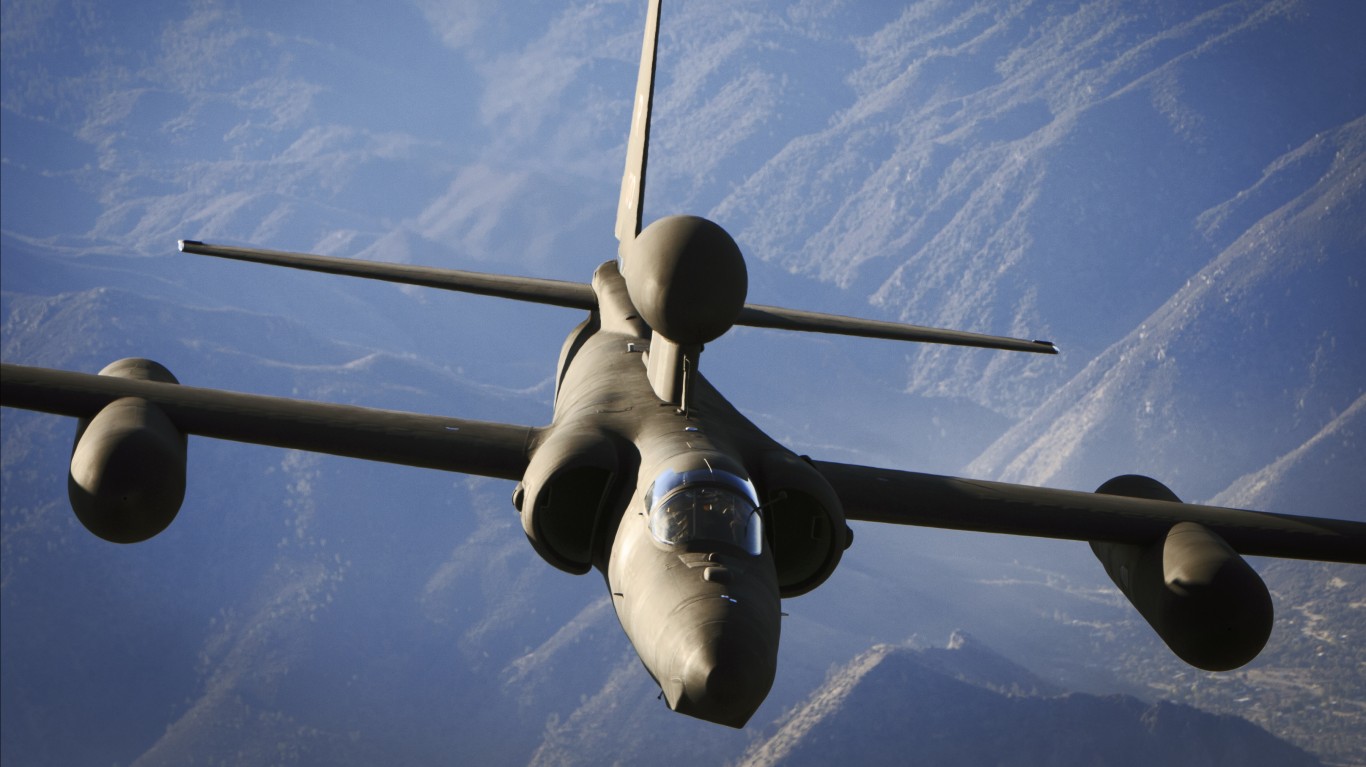
Published:

24/7 Wall St. Insights:
The U-2 Dragon Lady is one of the most iconic reconnaissance aircraft in military history. Throughout the Cold War, the U-2 provided intel on Soviet operations around the world. Despite entering service all the way back in 1955, the Dragon Lady still sees service today in the U.S. Air Force.
Basically, the U-2 was designed to perform high-altitude surveillance missions. Its ability to fly at altitudes more than 75,000 feet made it almost impossible to detect or intercept by Soviet aircraft. (This country flies the most MiG fighter jets, and it’s not even close.)
These aircraft come equipped with advanced radar, infrared sensors, and signals intelligence equipment. However, these tools have been massively upgraded since the 1950s.
In the modern era, the U-2 continues to serve in the U.S. Air Force’s intelligence, surveillance, and reconnaissance (ISR) missions. While many of these missions have been taken over by drones or satellites, the U-2 still has value to the USAF. It is used for anything from monitoring military developments in hostile regions to assisting in humanitarian efforts. (These are the biggest drone defense companies.)
The U-2 performs a variety of missions for the U.S. Air Force, along with a number of other incredibly vital aircraft. Here, 24/7 Wall St. is taking a closer look at some of the older aircraft in the U.S. Air Force’s arsenal.
To identify the oldest aircraft currently in service of the U.S. Air Force, 24/7 Wall St. reviewed data from the 2024 World Air Forces report from FlightGlobal, an aviation and aerospace industry website, and ranked the aircraft chronologically. Additionally, we’ve included supplemental information on the type of aircraft, top speed, how many are in active service, and armament. We excluded trainer aircraft.
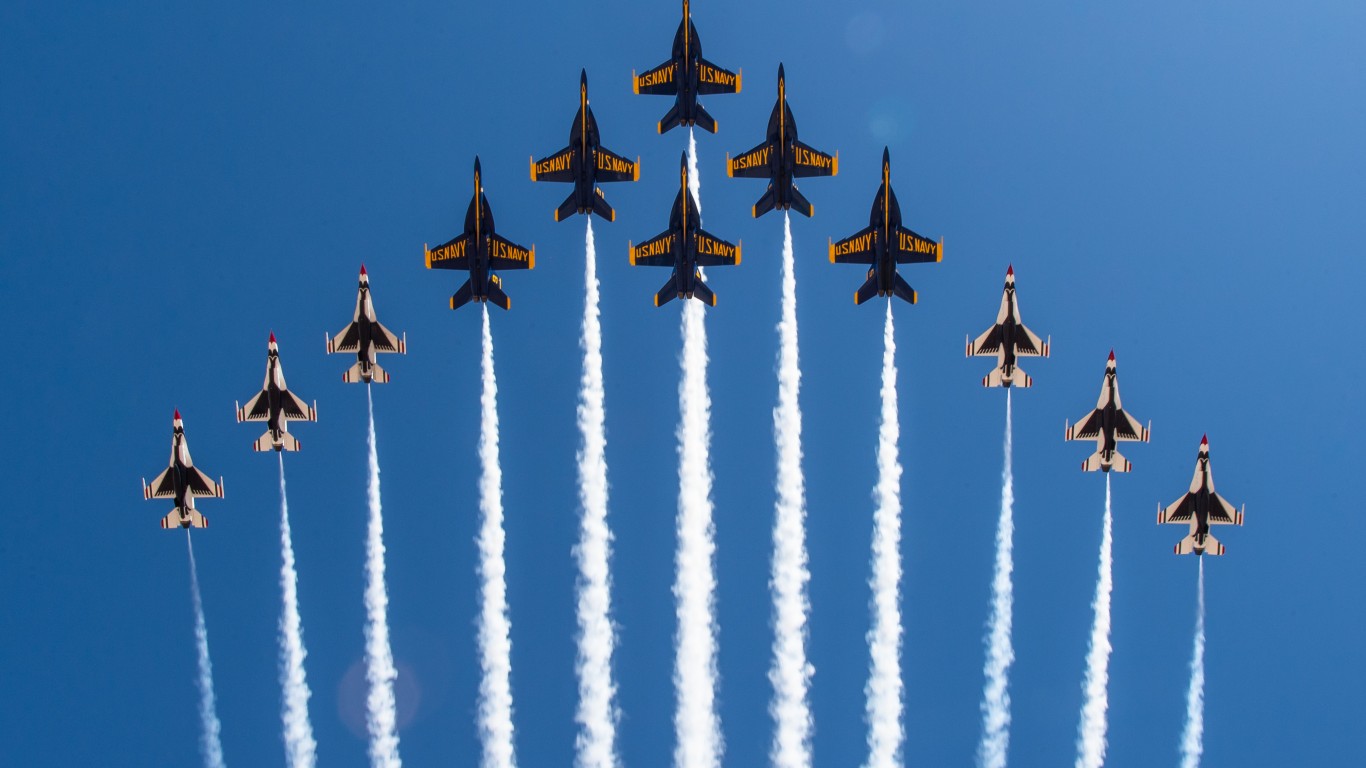
Understanding the aircraft in the US Air Force is important because these aircraft play a pivotal role in maintaining national security and global stability. Each aircraft is designed for specific missions, from air superiority to strategic bombing and reconnaissance, which are essential for defending the country and projecting power abroad. Also knowing which aircraft are in service give context to military capabilities and a better understanding of national defense.

The B-21 Raider is designed to be the future of U.S. air dominance. It will feature advanced stealth technology to evade detection while delivering both conventional and nuclear payloads.
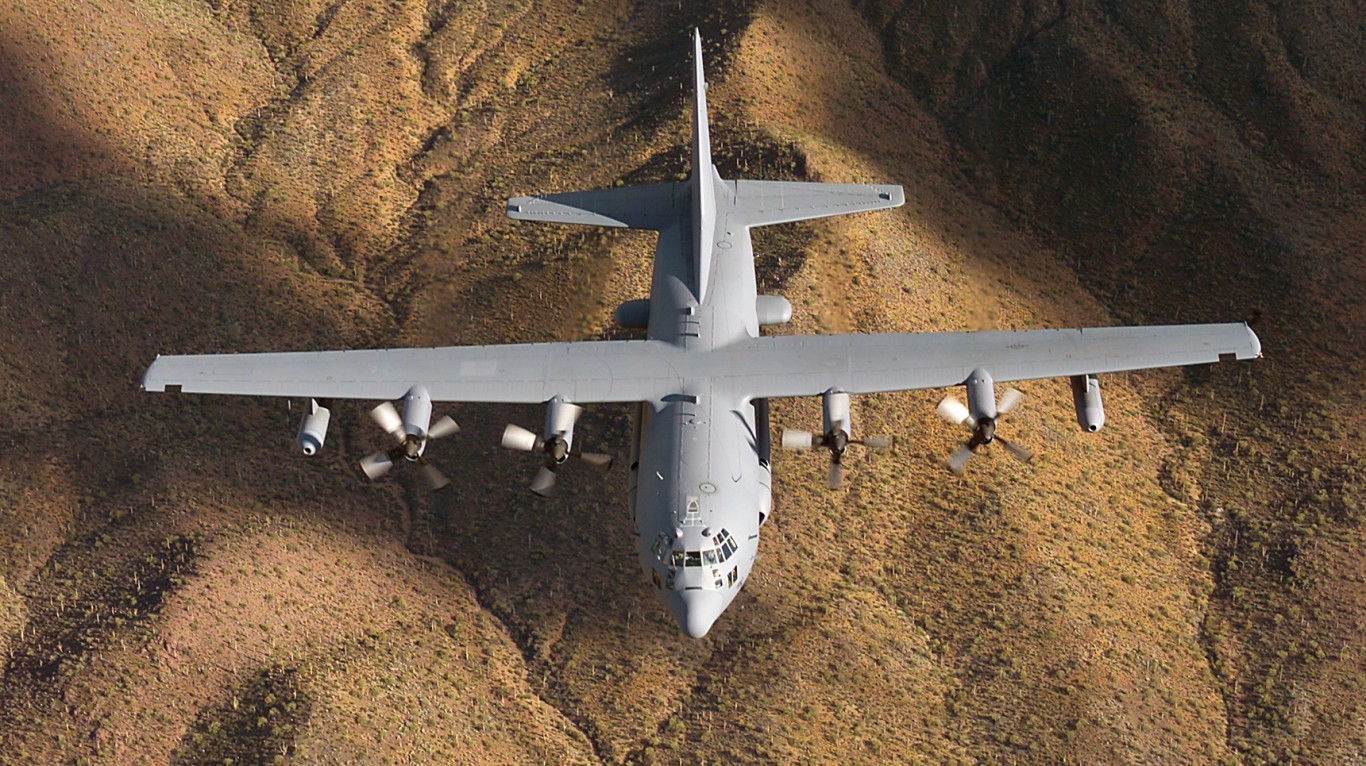
Introduced just this past year, the Compass Call is designed to disrupt enemy communications and radar systems, making it a critical asset in modern electronic warfare operations.
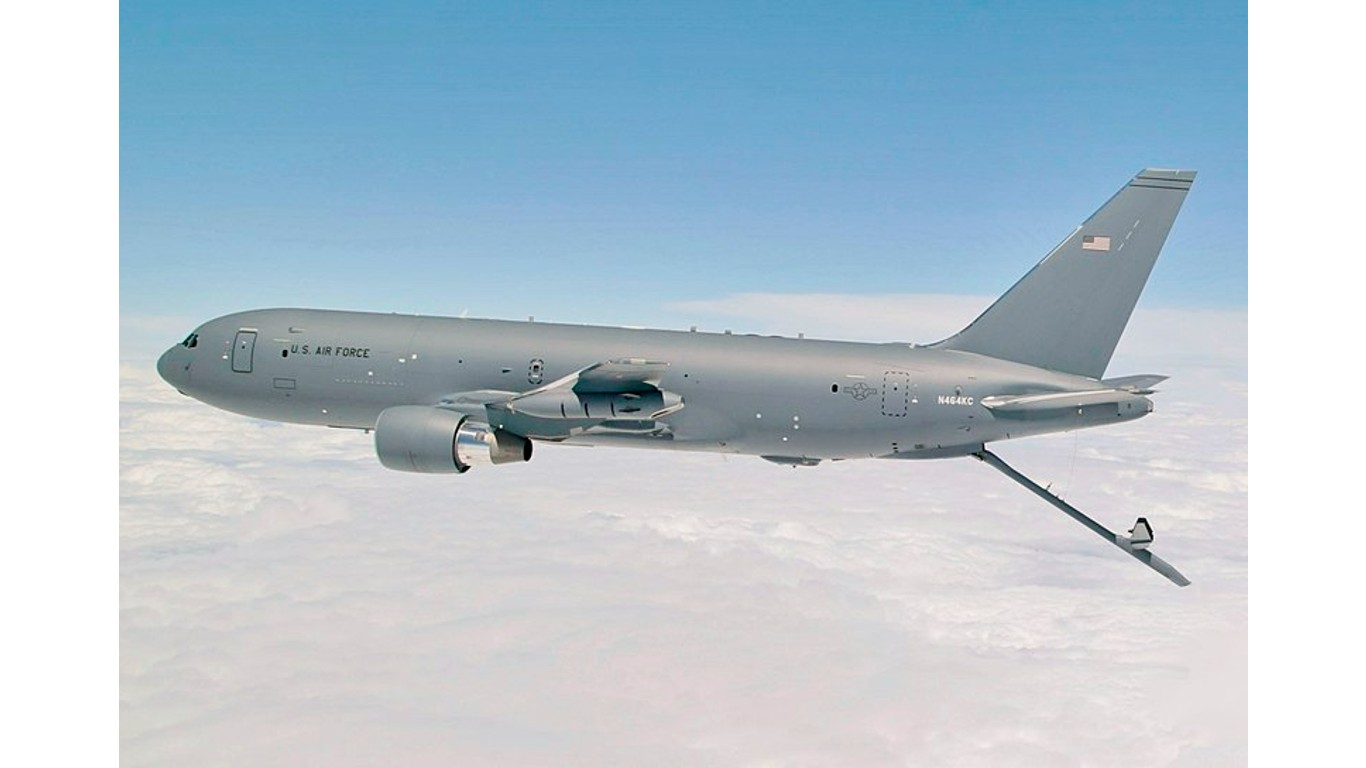
The KC-46 Pegasus is one of the newest aircraft to enter the U.S. Air Force. It represents the latest in air refueling technology and is capable of refueling a number of aircraft while also performing cargo and medical evacuation missions.
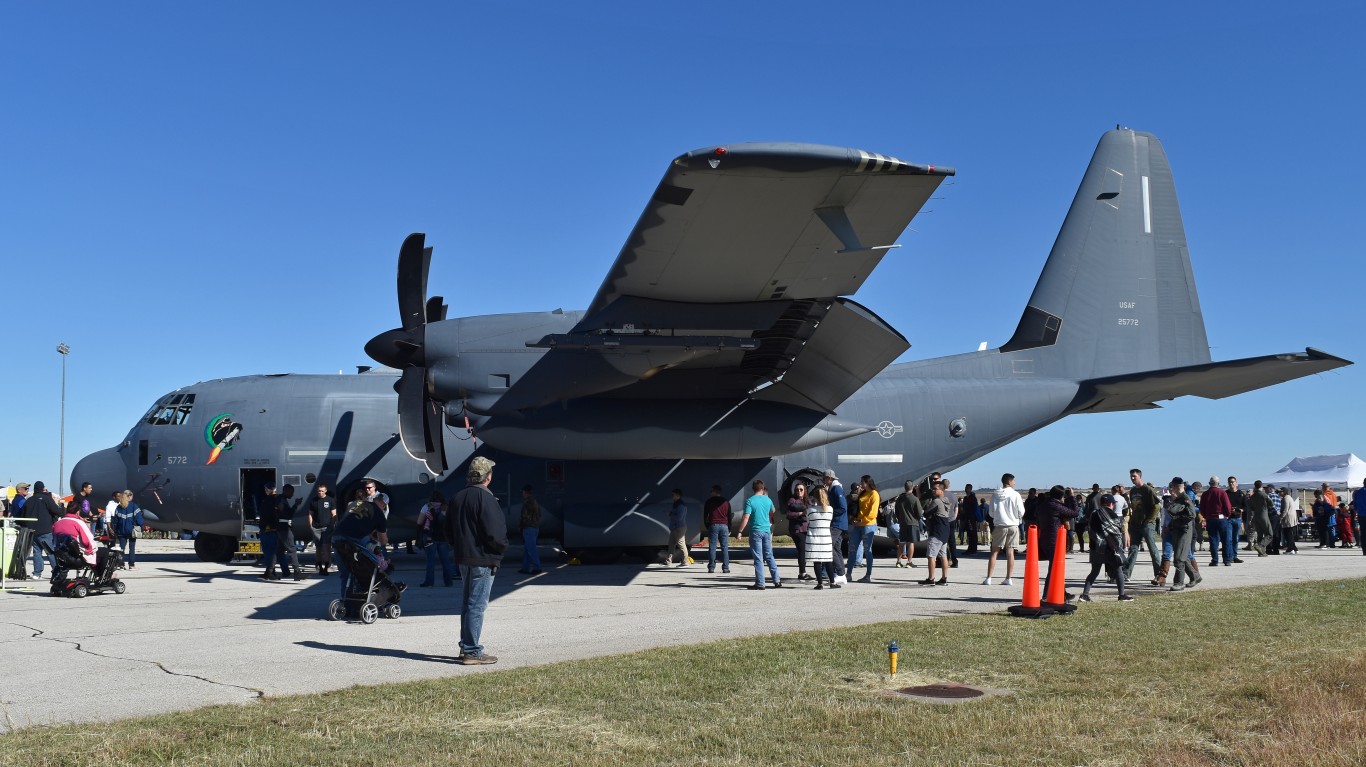
Considered one of the most heavily armed gunships in the U.S. Air Force, the AC-130 Ghostrider is designed to provide overwhelming firepower during ground operations. What sets this aircraft apart from others is that it is capable of equipping a high-power field howitzer to its hull.
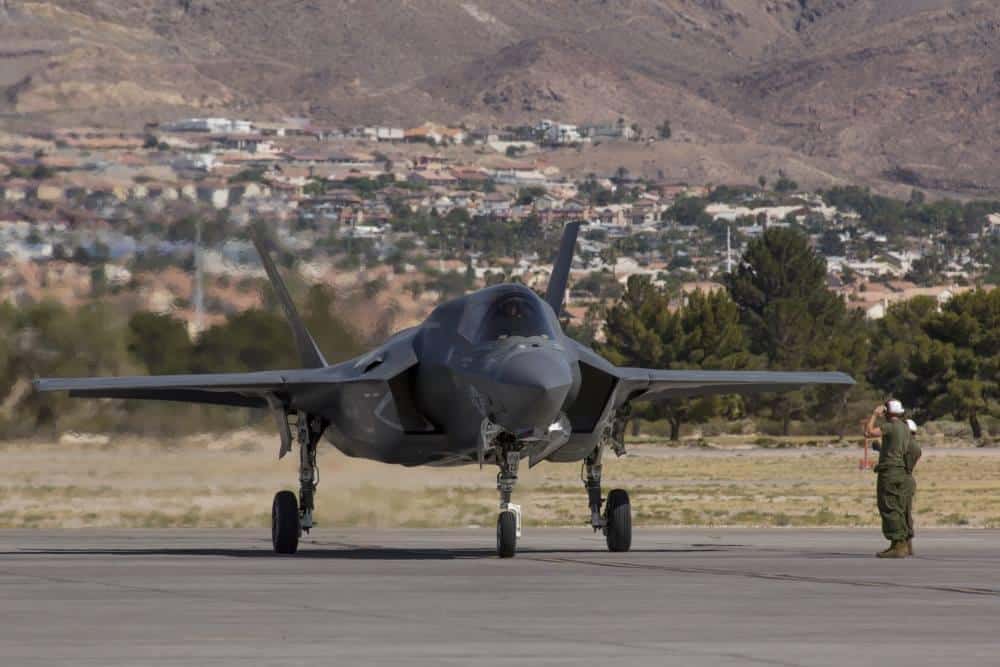
The F-35 Lightning II is one of the newest additions to the U.S. Air Force. As a fifth-generation strike fighter aircraft, the Lightning II can play a number of roles incorporating the newest stealth technology.
The Commando II is specifically designed for infiltration, exfiltration, and resupply missions in hostile territory. These typically support U.S. Special Operations Command missions.
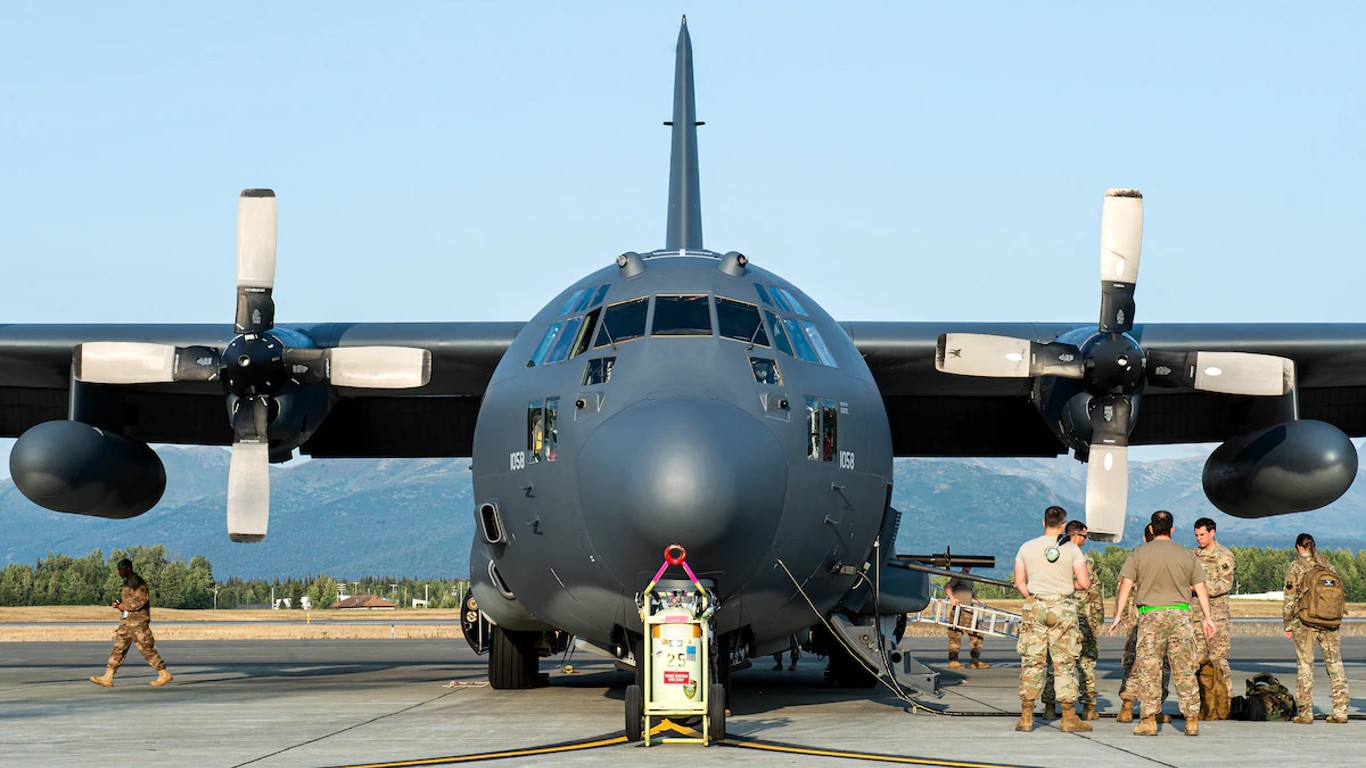
Typically, the AC-130 Stinger II plays a close air support or ground attack role as one of the most heavily armed aircraft in the U.S. Air Force.

The unique design of the Osprey allows it to change from a helicopter to a turboprop plane. This versatility makes it ideal for special operations missions. Also, the Marine Corps relies heavily on this aircraft for its quick and effective transport capabilities.
The F-22 Raptor is one of the elite fifth-generation aircraft, introduced in 2005. It features some of the newest stealth technology and can hit speeds around Mach 2. It comes equipped with a 20mm automatic cannon standard and can be outfitted with Sidewinder and AMRAAM missiles, as well as joint drop munitions and air-launched cruise missiles.
One interesting fact about this aircraft is that the Raptor’s supercruise ability enables it to sustain high-speed flight without the need for afterburners. This sets it apart from most other fighters, which typically require afterburners to exceed the speed of sound. The F-22 Raptor can sustain speeds of Mach 1.5 to Mach 2 in supercruise mode.
Typically used for VIP transport and special mission roles, the G550 combines speed and luxury with advanced avionics.
The Leonardo AW139 is typically used in search and rescue missions, medical evacuations, and troop transport. This helicopter is also widely used on the civilian side.
Introduced in 2001, the C295 is a tactical transport aircraft with a top speed of 358 mph. There are only 3 currently in active service.
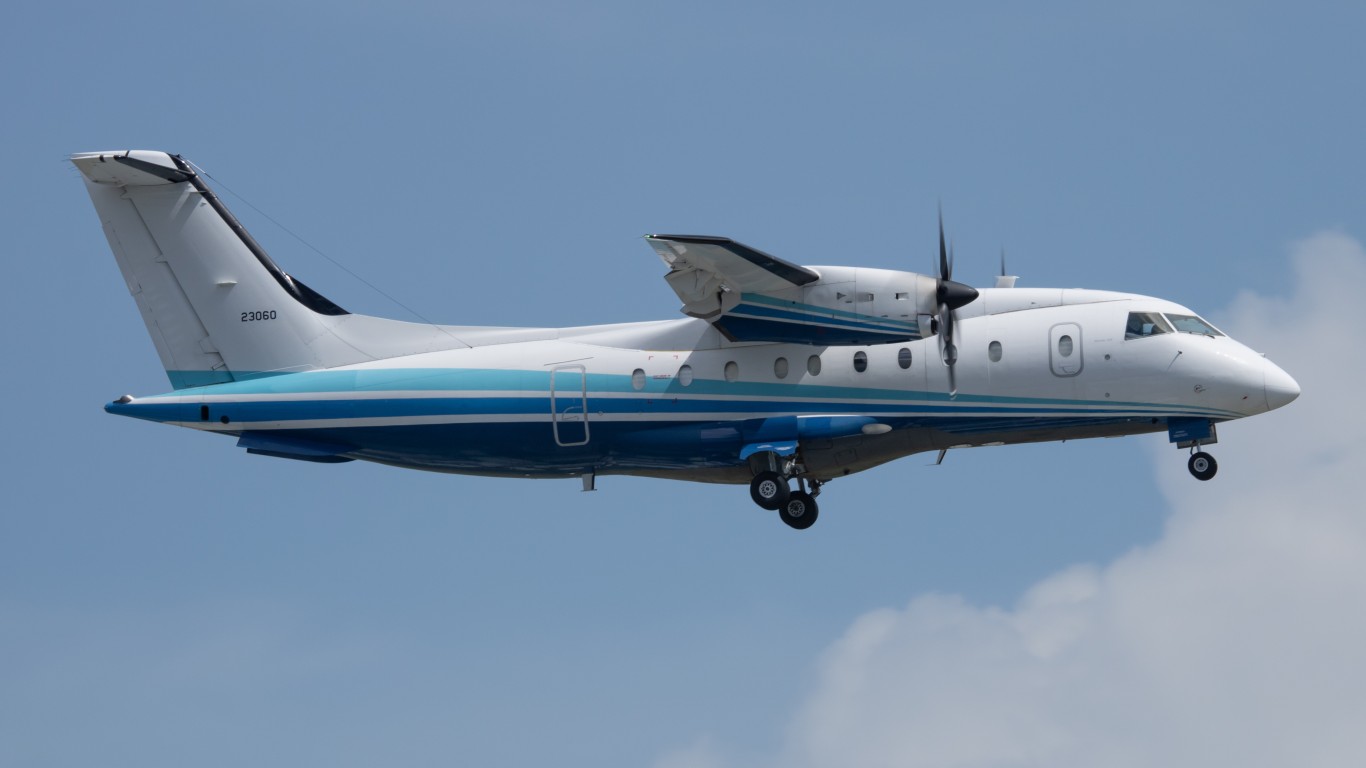
Although the Wolfhound has a low top speed, it is regularly used by U.S. Special Operations Command for transporting small teams and cargo.
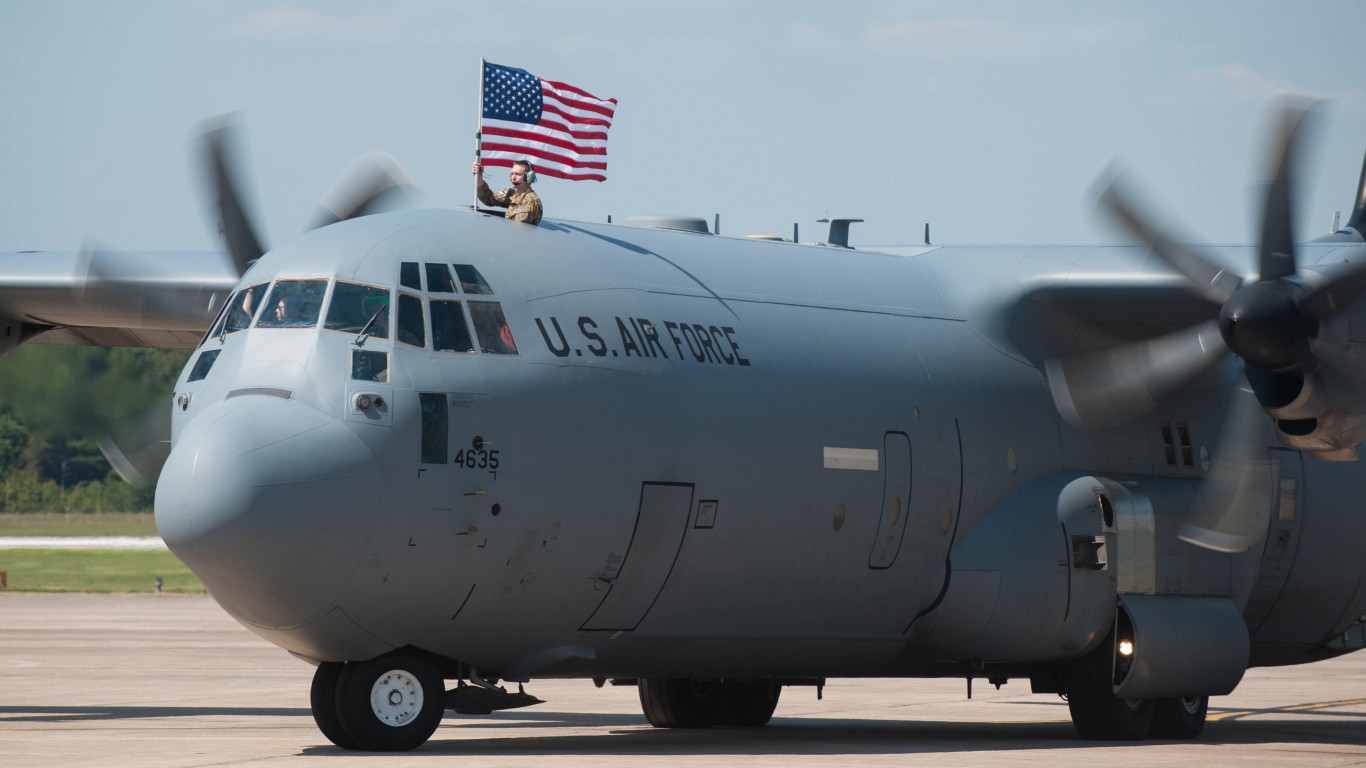
The C-130J Super Hercules is known as the workhorse of the U.S. military with over 300 currently in service of the U.S. Air Force alone. These massive aircraft act as the logistical backbone of the fleet.
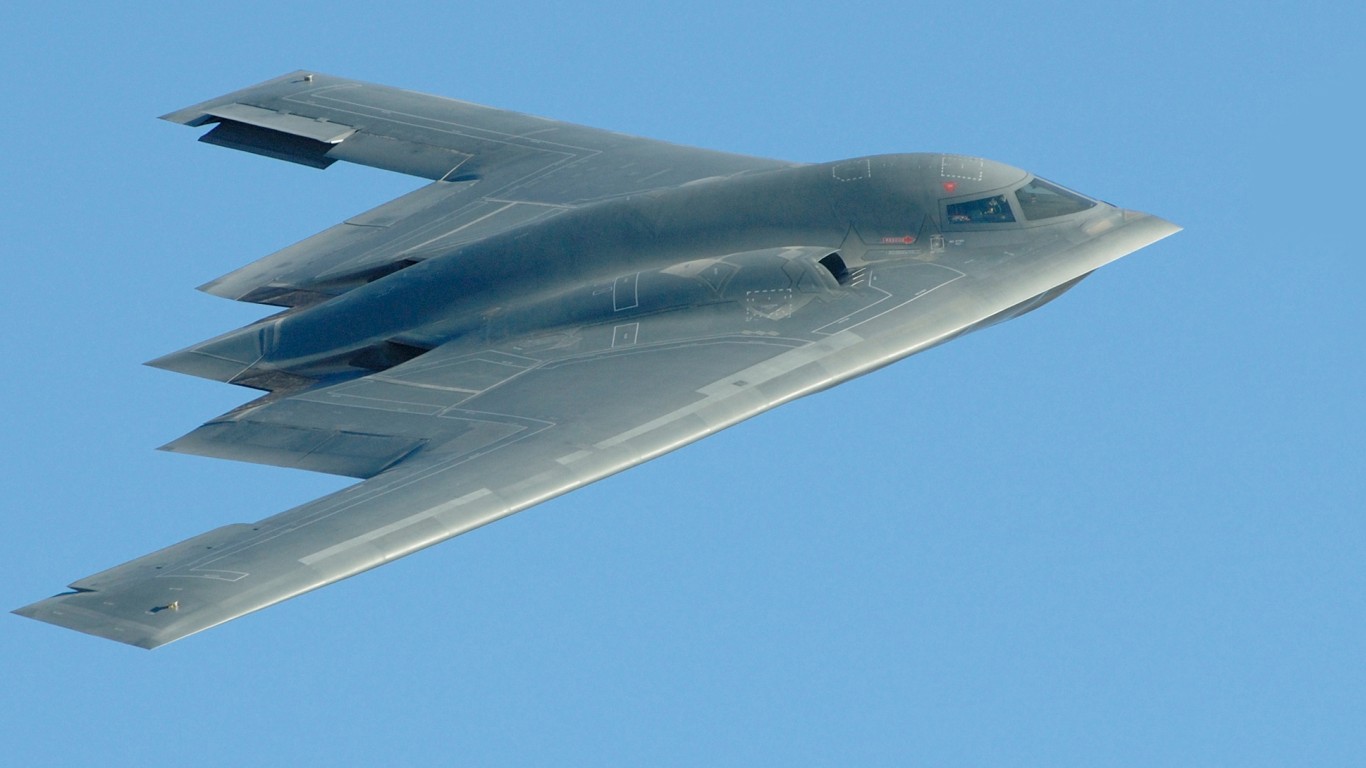
Introduced in 1997, the B-2 Spirit is a strategic stealth heavy bomber with a top speed of 628 mph. It is designed to deliver a wide range of ordnance including nuclear bombs. Although there are only 17 of these aircraft in active service, they can punch far above their class in terms of what they can deliver in payload.
The Bombardier Express E-11 is a special missions platform that plays a role in providing battlefield communications between air and ground forces.
The E-8 Joint STARS is an incredibly important asset for coordinating large-scale military operations as it provides real-time ground surveillance, targeting, and battlefield management.

The C-32 is typically used to transport high-ranking government officials, including the Vice President of the United States.
Normally, the C-17 Globemaster III plays important roles in rapid strategic deployment and humanitarian missions around the world.
As its name suggests, the C-5M Super Galaxy is the largest aircraft in the U.S. Air Force. It is capable of transporting oversized cargo like tanks, helicopters, and even other aircraft.
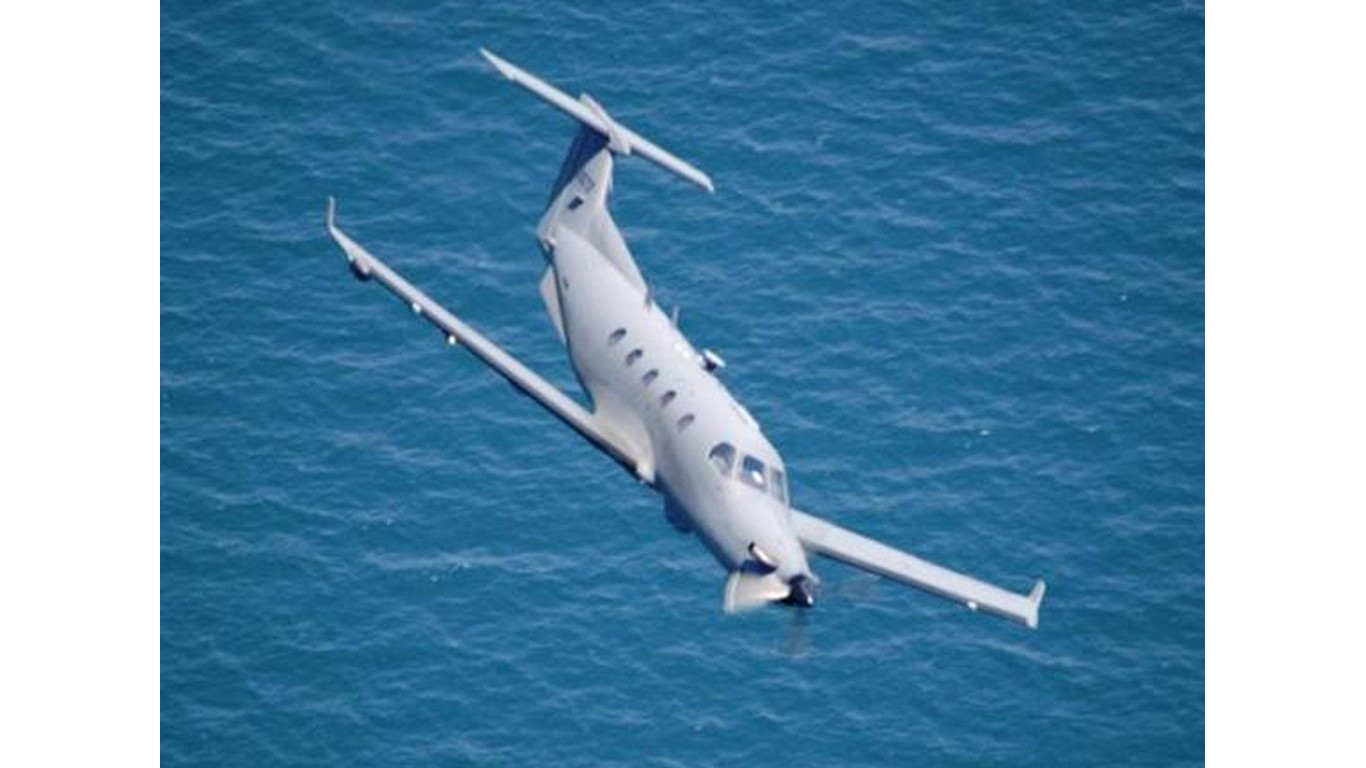
U.S. special operations units widely use the U-28A Draco for intelligence, surveillance, and reconnaissance missions.

Currently there are no Sky Wardens in service; however, the U.S. Air Force is in the process of ordering a number of these aircraft.
Despite a fairly low top speed, the CN-235 is fairly versatile and capable of operating on short rough airstrips.
Introduced in 1986, the B-1B Lancer is a strategic heavy bomber that is capable of reaching speeds up to 833 mph, which makes it one of the fastest bombers in the U.S. Air Force. It carries a wide range of armaments, including joint direct attack munitions, general-purpose bombs, JASSM missiles, and even freefall nuclear bombs.
Normally, the Cessna 208 Caravan is used for light transport missions. It is also fairly flexible and can operate from short or rougher air strips in remote locations.
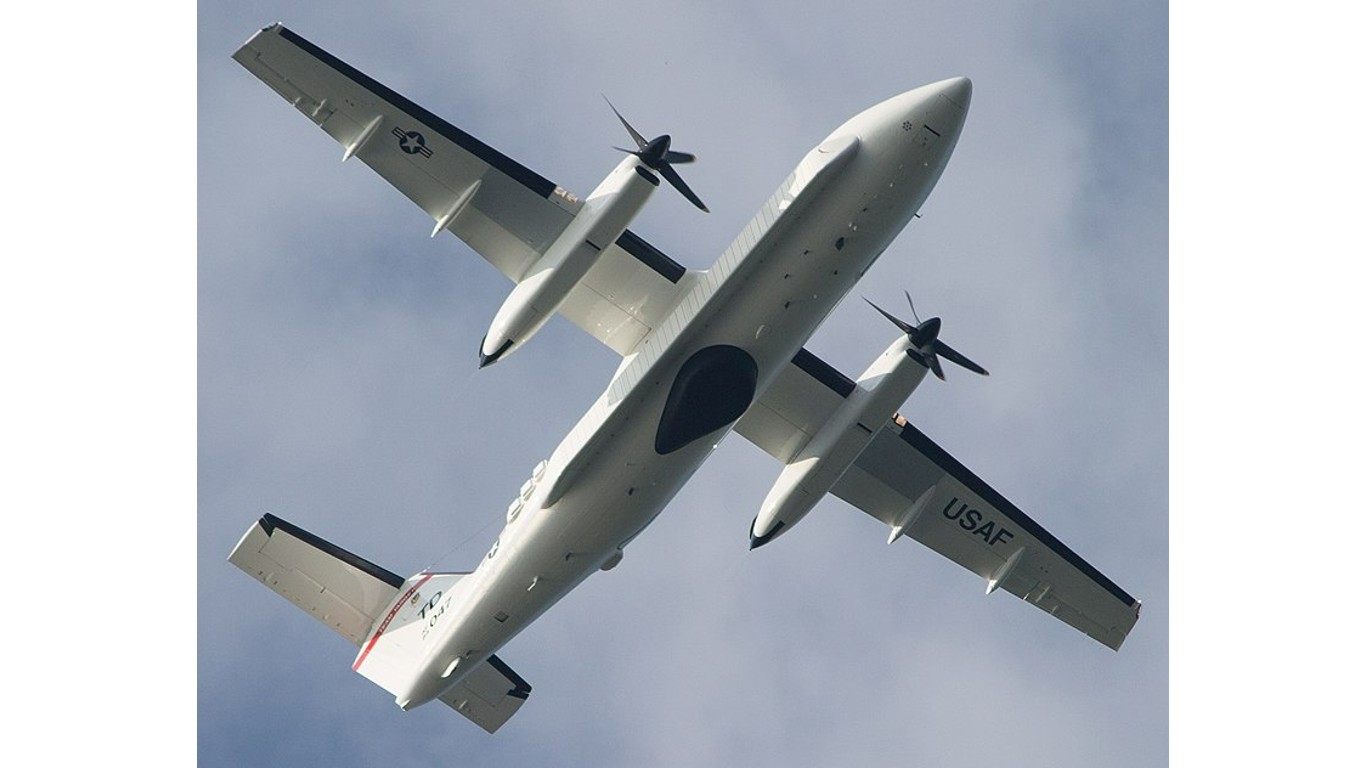
The Dash 8 has gained in popularity over the years among civilians and military forces for transporting personnel and cargo.

Normally, the C-20 Gulfstream IV is used for high-level government officials and military leaders as a VIP transport.

Introduced in the early 1980s, the KC-10 Extender is a tanker and cargo aircraft with a top speed of 600 mph. It is capable of refueling multiple aircraft in a single mission.
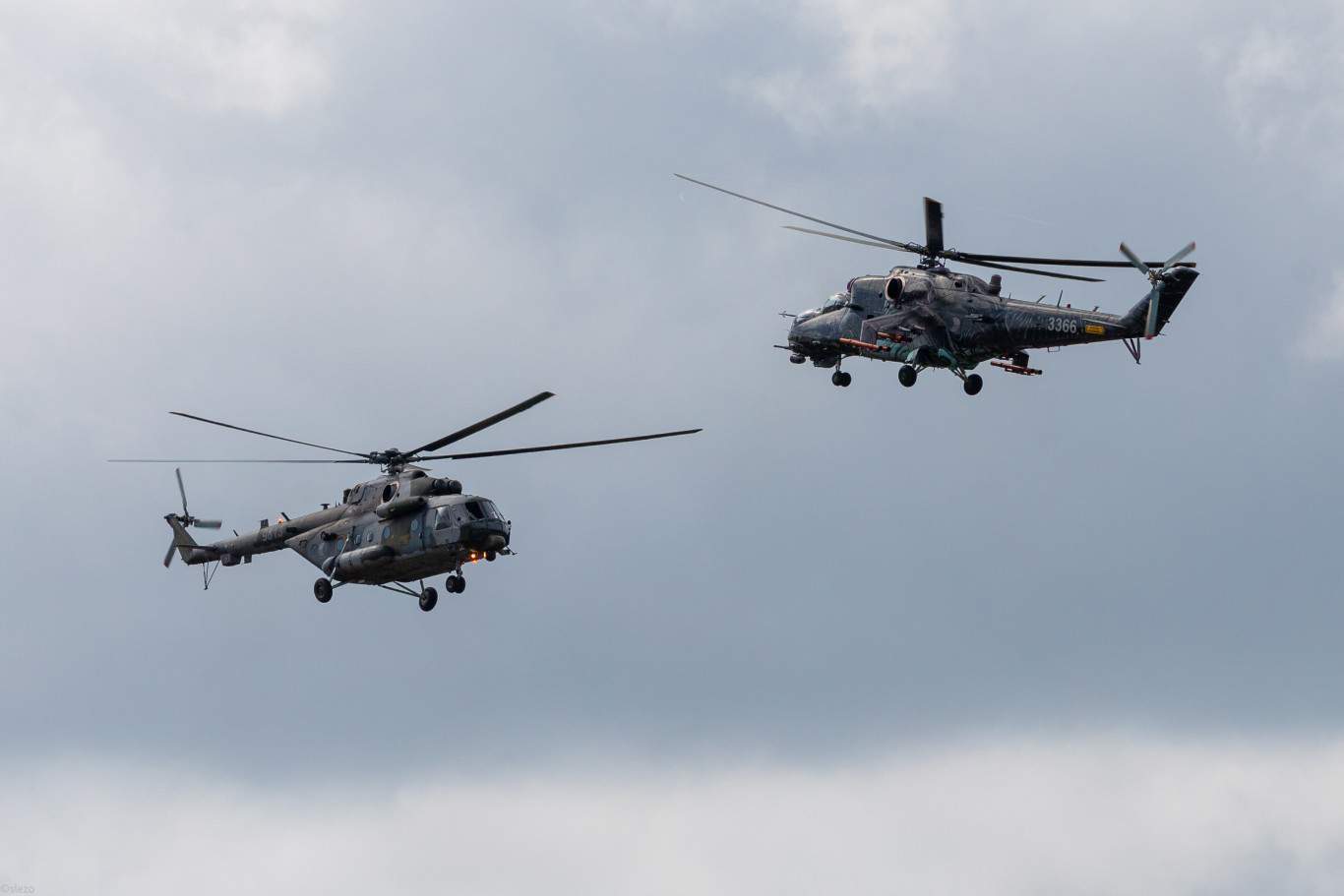
Originally designed by the Soviets at the Mil Moscow Helicopter Plant, this has been a staple for the Russian Air Force for years. While this is a widely used helicopter for many militaries around the world, the U.S. Air Force only has one. However, American engineering for other more advanced helicopters like the Black Hawk or Apache is more of a priority for the U.S. Air Force.

The Black Hawk features twin turboshaft engines, a single four-bladed main rotor, and a four-bladed tail rotor, which allow for top speeds over 180 mph. Typically, this helicopter carries a crew of two pilots and two crew chiefs and can transport up to 11 fully equipped soldiers. In total, the Black Hawk can carry a payload of roughly 9,000 pounds.
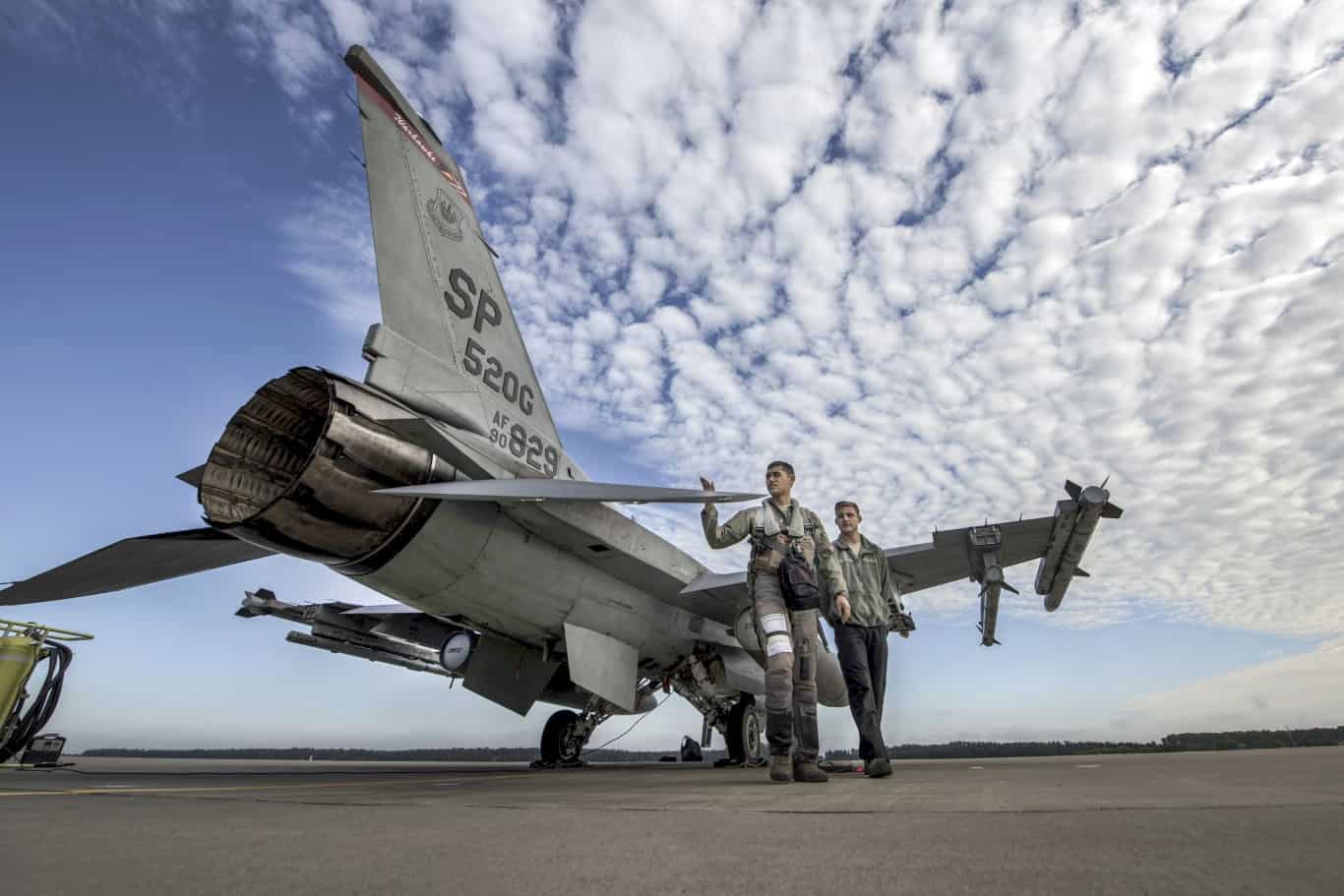
The F-16 comes standard with a 20mm internal automatic cannon and can be equipped with a range of air-to-air missiles and air-to-ground missiles. It can reach speeds of roughly 1,300 mph and has an operational range of 2,600 miles. The Fighting Falcon fills a variety of roles for any air force but it is primarily used for interception and general strike missions.
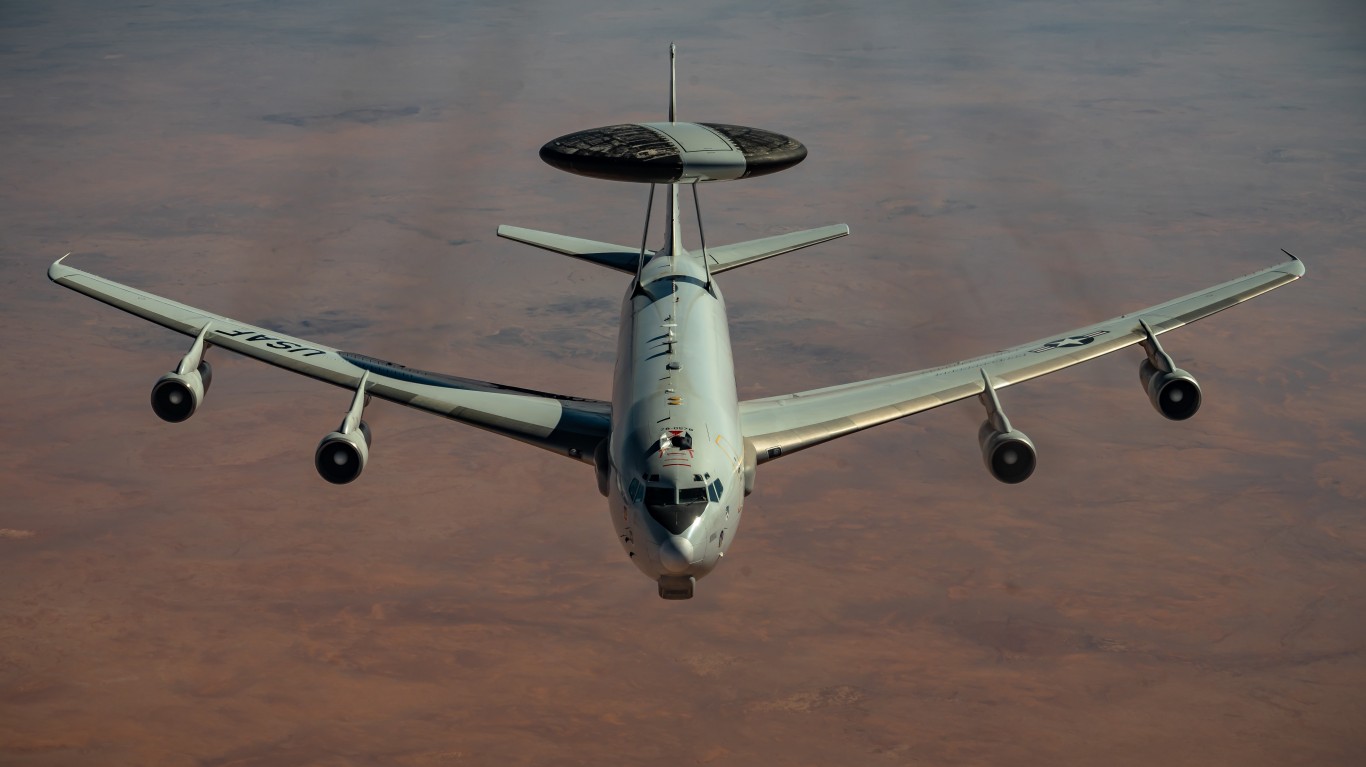
Known as “the eyes in the sky”, the E-3 provides real-time data to coordinate air operations via its distinctive rotating radar dome.
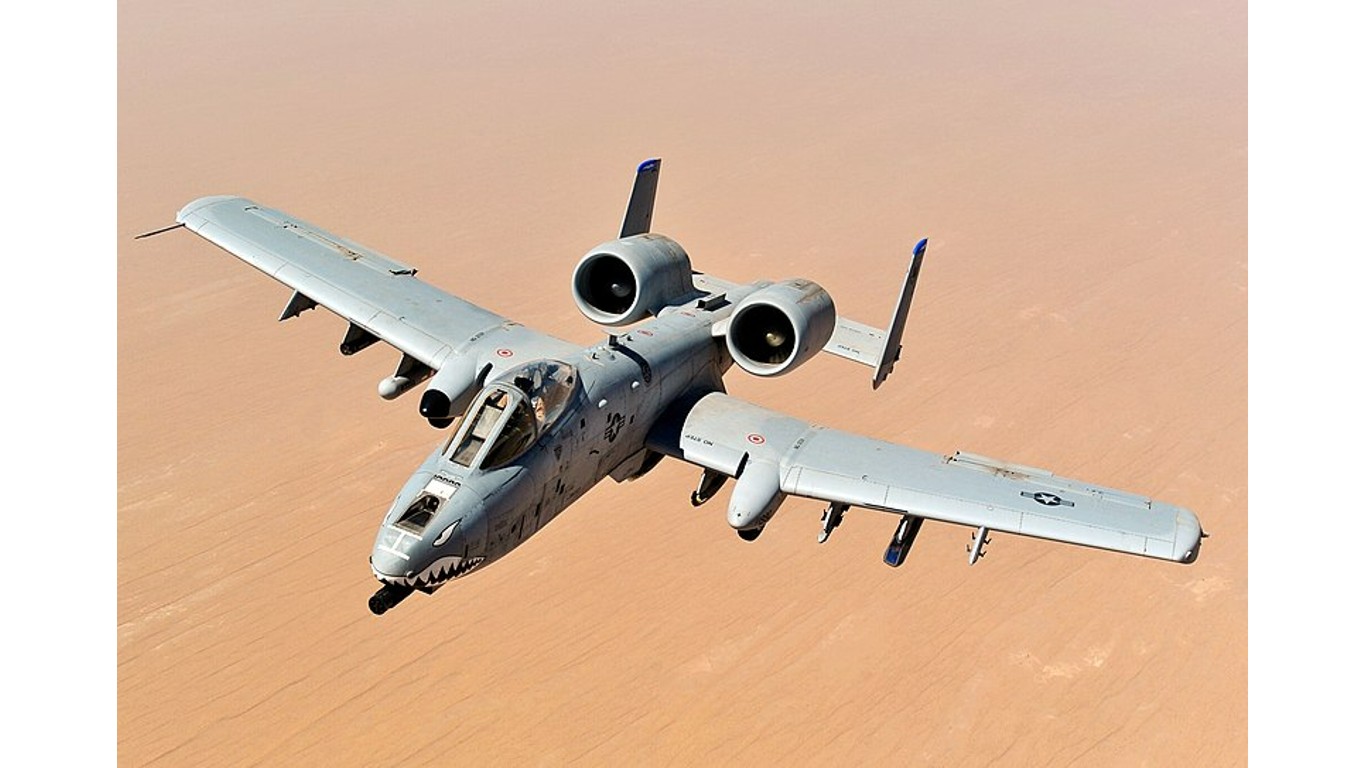
Introduced in 1976, the A-10C Thunderbolt II is a specialized close-air support and forward air control aircraft. It is armed with a 30mm GAU-8/A gatling gun, which can fire up to 3,900 rounds per minute, along with a variety of missiles and bombs, including Mavericks and Sidewinders. Built by Fairchild Republic, the A-10 is known for its toughness, earning its nickname as the “Warthog”. One aspect about the A-10 is its “titanium bathtub” cockpit, which provides the pilot with protection from ground fire.
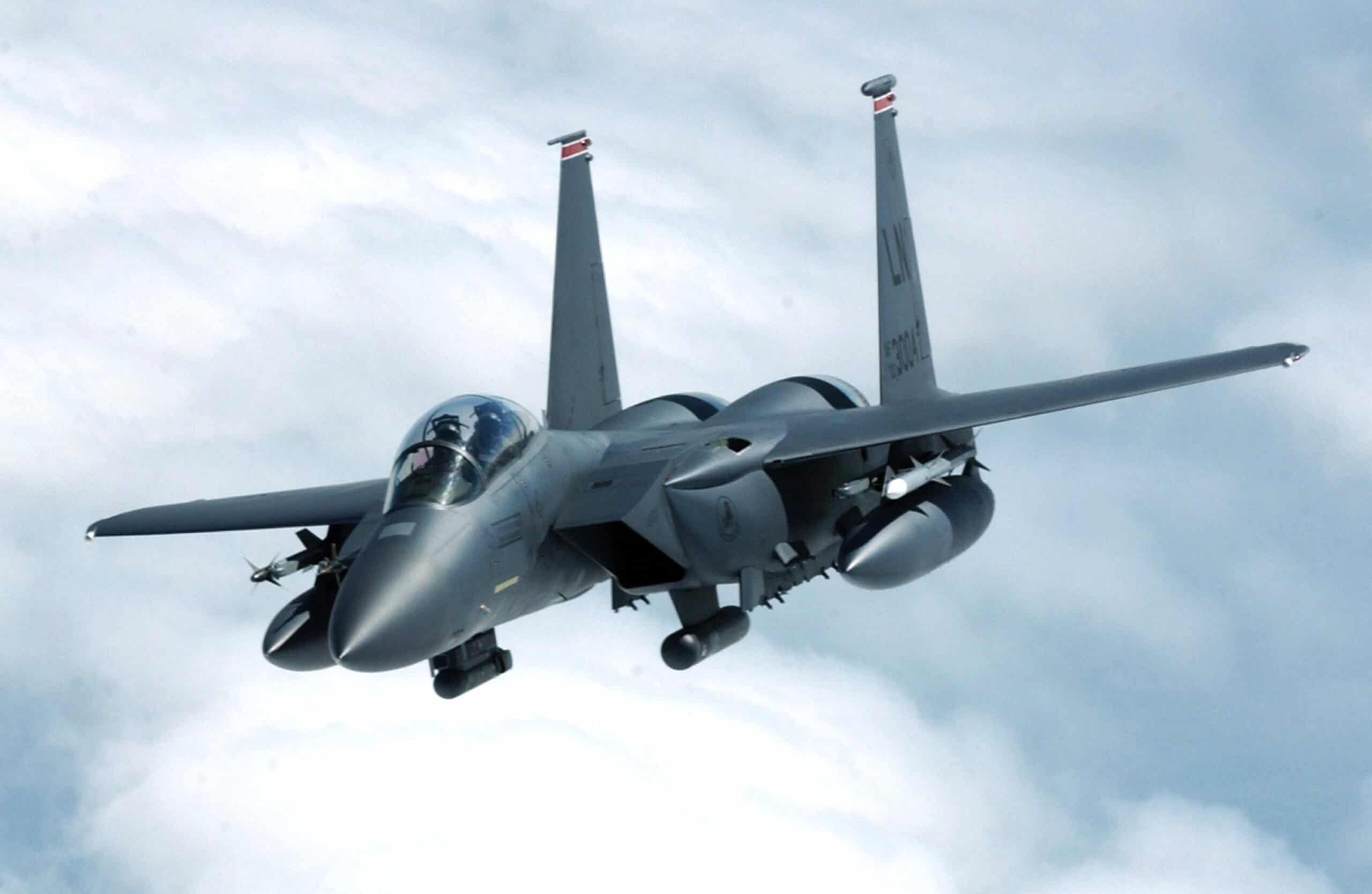
Developed by McDonnell Douglas (now Boeing) in the 1970s, the F-15 Eagle and Strike Eagle variant stand as some of the most iconic and successful fighter jets in the world. With a top speed over Mach 2, the F-15 can outrun almost anything in the sky. Its twin-engine design provides serious thrust, allowing some variants to carry over 16,000 pounds of ordnance, including air-to-air missiles and bombs.

The EC-130 Commando Solo III specializes in psyops, or psychological operations, such as broadcasting radio and television signals to influence enemy forces or even support humanitarian missions.
Nicknamed “The Doomsday Plane”, the E-4 is designed to provide command and control in the event of nuclear conflict or national emergency.
Typically, the C-12 Huron is used for transporting personnel, cargo, and medical evacuation missions.
Although it was originally designed for civilian use, the Learjet 35 has been adopted for military roles. Typically, it performs medical evacuations and VIP transport.
The Twin-Huey is one of the longest serving helicopters in the U.S. Air Force and has been used in everything from medical evacuations to troop transport.
Apart from military service, the Navajo has gained in popularity among civilian and commercial pilots.
Known for its versatility, the DHC-6 Twin Otter can take off and land on short and rough airstrips, which makes it ideal for transport in remote locations.
Introduced in 1962, the Boeing RC-135 is a multi-mission reconnaissance aircraft with a top speed of 581 mph. It has played a huge role in intelligence gathering for decades, especially during the Cold War.
Introduced in 1959, the Combat King is one of the oldest aircraft in the fleet. It was specially designed for search and rescue operations. Also, these aircraft are capable of refueling helicopters during long-range rescue missions.
Currently, there are over 370 KC-135 Stratotankers in service of the U.S. Air Force. These provide in-flight refueling support. This aircraft in particular has been in service longer than practically any other aircraft in service now.

Introduced in 1955, the B-52H Stratofortress is a long-range strategic heavy bomber. Despite its age, the B-52 is expected to remain in service for some time, making it one of the longest-serving aircraft in the U.S. Air Force.

Introduced in 1955, the U-2 Dragon Lady is a high-altitude surveillance aircraft capable of reaching speeds of 475 mph. These aircraft can fly at extreme altitudes and are typically used for intelligence gathering, especially during the Cold War.
Retirement can be daunting, but it doesn’t need to be.
Imagine having an expert in your corner to help you with your financial goals. Someone to help you determine if you’re ahead, behind, or right on track. With SmartAsset, that’s not just a dream—it’s reality. This free tool connects you with pre-screened financial advisors who work in your best interests. It’s quick, it’s easy, so take the leap today and start planning smarter!
Don’t waste another minute; get started right here and help your retirement dreams become a retirement reality.
Thank you for reading! Have some feedback for us?
Contact the 24/7 Wall St. editorial team.